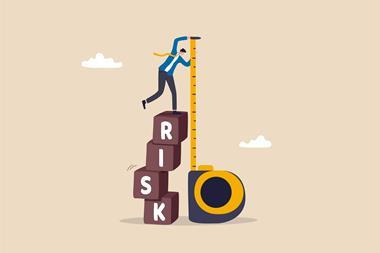Scenario planning can help executives better understand the impacts of new goals and objectives set out in the organisation’s strategic plans. Here’s how you can optimise your scenario planning, writes Carol Williams, enterprise risk management consultant and founder of ERM Insights
At a high level, the ultimate goal of scenario planning is to help executives better understand the impacts of new goals and objectives to ensure the goals set out in the organisation’s strategic plan are the right ones.
Why use scenario planning? It is an effective tool to discover and test assumptions to ensure executives are developing the right goals and objectives. Executives can then determine if they are okay with any risks associated with a particular scenario, and if not, determine how they want to address any issues to be confident the organization is more resilient to risk(s).
Questions during the scenario planning process can either be goal specific or non-goal specific. This article will explore non-goal specific questions since these will apply to any organization because it is impossible for me to know goal-specific questions. After all, I don’t know your organization’s goals!!
The questions below are broken into different phases of the strategic planning process – discovery (before), creating scenarios and discussion with executives (during), and analysing these scenarios and taking action (after).
It’s important to note that every session you have with executives should focus on one strategic goal at a time. Trying to examine every goal in the same meeting will simply be overwhelming to everyone involved.
Before – pre-scenario planning (discovery) questions…
Before developing potential scenarios, there are certain questions you need to ask to understand the particular goal. Asking in advance will give you more time prepare, but if you thrive in spontaneity, the following questions could be asked during a scenario planning session.
1. What are any internal dependencies to achieving this goal?
Internal dependencies include anything that needs to be in place to meet the goals, as long as the company has control over those actions. A few examples are financial resources, human resources, market share, or any initiatives or actions required to achieve the objective and goal.
2. What are any external dependencies to achieving this goal?
This includes anything outside the organization that has to be in place in order for the goal to be met. Examples can include certain laws or regulations being passed, outside vendors, consumer preferences, and more.
3. What assumptions were made when deciding on this goal?
Executives will make certain assumptions when developing the company’s strategic plan. A client in the mass transit sector for example assumed for one strategic goal that a certain law would be passed, the community would support their ideas enough to finance a major construction project, and the city would continue growing and therefore the demand for mass transit would increase.
During – questions to ask while developing and discussing actual scenarios…
Once you gather information about dependencies and assumptions, it’s time to develop the actual scenarios. Again, this can be done during a meeting with executive(s) or beforehand depending on your personal preferences, company culture, and the time allotted for the discussion.
With information in hand, mix and match the dependencies and assumptions to develop several scenarios. A couple of questions that should come up during this process include:
4. How confident are we that all of those dependencies will be in place when needed?
5. What if one assumption turns out not to be true? How does that impact achieving the goal?
It’s conceivable to develop 10+ scenarios during this process. But in order to not overwhelm executives, pick 3-4.
Now you are at the point of the process where executives will get more directly involved, usually in the form of some sort of workshop.
It’s important to note that as the risk professional, it is not your job to force a certain perspective on decision-makers. At this point, you need to reassure executives and other participants that you welcome feedback and engagement.
Questions to ask during this important phase of the scenario planning process include:
6. How likely is this scenario to occur?
7. How would this scenario impact the organization? Think both positive or negative impacts.
8. Are these impacts acceptable?
9. Will there be a financial burden placed on the business?
10. Are there any specific areas the company could invest in to reduce negative impacts and be more resilient should this scenario occur?
Another important note to make is that none of these questions mention the word “risk.” If you notice, I have not used that word since the beginning of this article except to describe your role.
In order for executives to understand what’s going on and be candid enough to provide the information for scenario planning to be truly effective, it’s important to speak in their language and not a “risk management” language. Using technical “ERM” jargon will just lead to confusion and stagnation.
After – questions to ask once potential scenarios are finalized
After developing scenarios and flushing out the details with executives, you should now categorize them as a “realistic” scenario, a “pessimistic” scenario, and lastly, the “desired” scenario. Doing so allows you and executives to look at the bigger picture rather than having to look at individual data points.
At this point, executives should be thinking about what to do from here.
In a comment to one of my prior articles on multi-dimensional risk assessment, a fellow risk professional, Hans Læssøe, explains that this is where “…real risk management is put into action.”
How do you decide what action needs to be taken?
If the more “realistic” scenario is not in line with the selected goal, the following questions will come into play.
11. Should the goal be changed?
12. What would happen if we changed the goal? (Any downstream effects of changing a goal have to be considered).
13. If we change the goal, could we make impacts worse? (In this situation, it may be better to leave the goal as is and make the most of the not-the-best situation).
With answers to these questions in hand, a decision can be made about whether the goal should be changed or not.
When new goals are being discussed, you will need to go back through the scenario planning process in order to answer questions #12 and #13. It is only with this information in hand that you and executives can make an informed decision on whether a goal should be changed or not.
At this point, the goals are set and likely scenarios are known, but that doesn’t mean that it’s all over. There are other questions that need to be asked to understand how a particular scenario is playing out in real life. These include:
14. How do we know if a particular scenario is happening?
15. Are there specific guideposts? (Go back to the assumptions and dependencies and look if any are good indicators of events.)
16. Now that you know how a particular scenario is playing out in real life, how will the organisation act?
Hopefully, your organization’s executives set aside resources and developed a contingency plan earlier in the scenario planning process to prepare for the potential of the “pessimistic” scenario unfolding.
These “non-technical” questions are pretty standard across industries and should provide you, the risk professional, with the information you need to develop and analyze potential scenarios. Please note that it is possible that your organization has goals that are technical in nature, which will require some more specific questions.
While this article is an end-to-end guide on standard questions that should be asked during scenario planning, scenario planning in and of itself is not a one-and-done process. Objectives change and assumptions around those objectives change as well. These assumptions have to be retested and scenarios modified to reflect the changing environment.
For more articles from Carol, click here: https://www.erminsightsbycarol.com/




















No comments yet